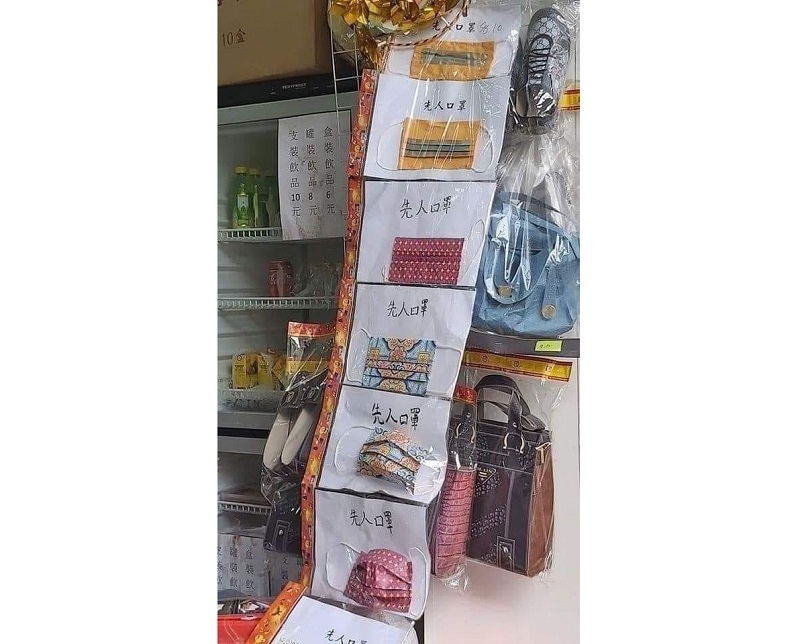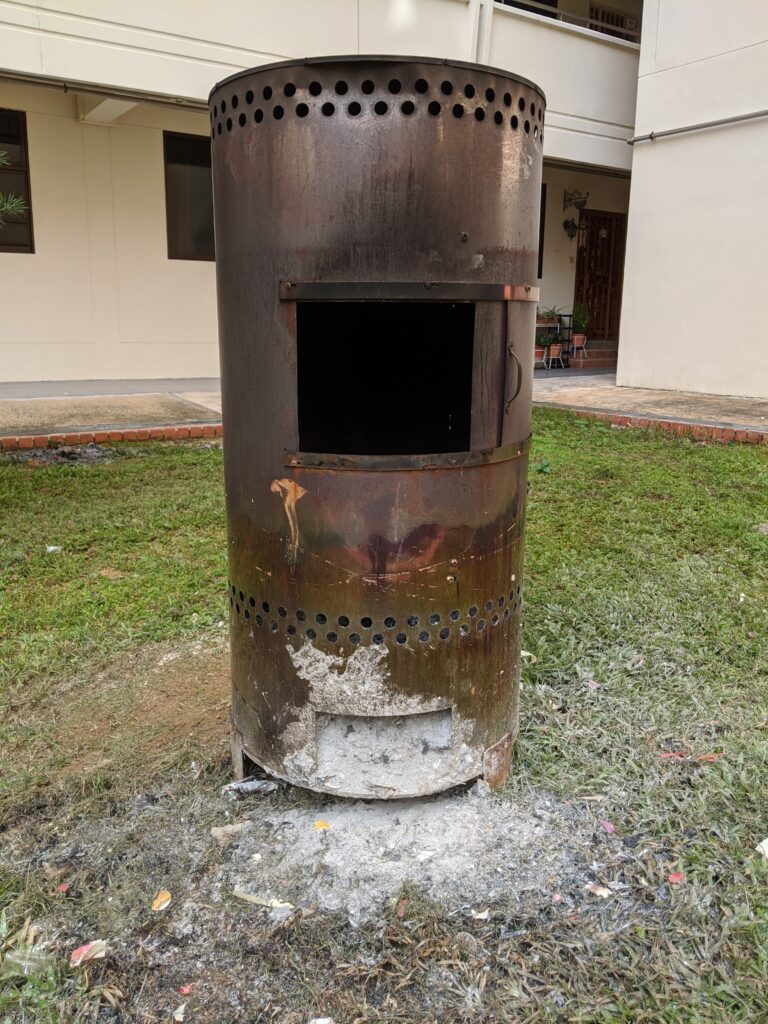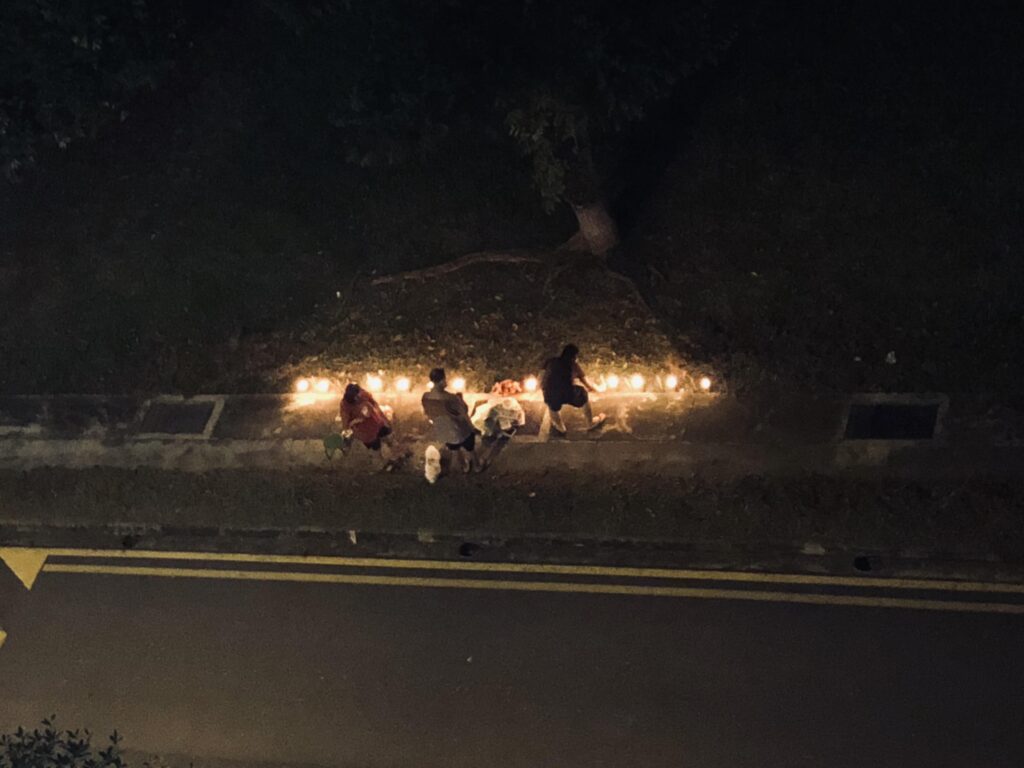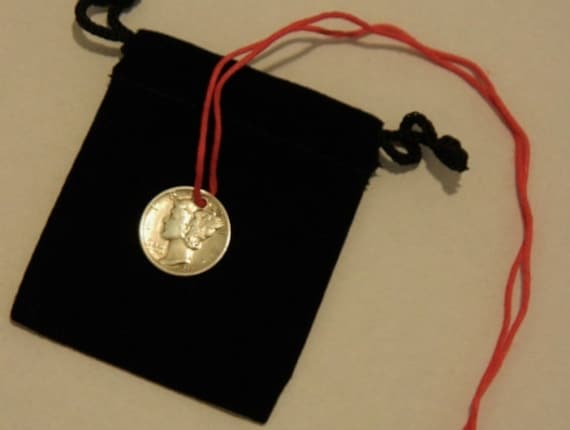First off. Glass IS NOT A CRYSTAL by definition. Ok? Got that? Good. Now for the long read.
Motivation
Sometimes friends send me things and it sends me down a rabbit hole. In this case a friend in Hawaii sent a reel on Instagram of glass that was being marketed as “Monoatomic Andara Crystals“. Don, host of Head on Fire podcast, a friend and author of Dabblers Guide to Witchcraft also fell into the rabbit hole and called the seller. $700 for a hunk of glass? Are you KIDDING ME!?
So let’s talk about this. I am not going to link to the original post because I am not a fan of attacking people, just educating. But we are going to go through some of what they said about these. When asked, they said that these were “Monoatomic Andara Crystals” and were made from “monoatomic metallic elements” and then listed some of the ways natural glass is formed through “volcanic activity, meteor strike or any high heat producing natural phenomena”, and that the main difference from normal glasses is the presence of “monatomic elements” within the glass. They also kindly listed those elements. I will talk about that list in the section on monatomic elements.
Next they cited a website for their information, so I WILL tear that one apart. Hello Life Treasures Kauai what fresh bullshit science words in a blender do you have for me?
“Monatomic Andara crystals are like an obsidian glass material made up of monatomic metallic elements that were heated to high temperatures either by volcanism, meteor strike or other heat producing phenomena. Monatomic metallic elements are powder-like in form and transmute to glass under high heat, similar to obsidian. It is their foundation of monatomic metallic elements that differentiate them from all other types of crystals, volcanic/natural glass, as well as man-made glass.”
*Takes a deep breath*
What is glass?
Well maybe we should start with what exactly is glass anyways?
“(…) glass, an inorganic solid material that is usually transparent or translucent as well as hard, brittle, and impervious to the natural elements. Glass has been made into practical and decorative objects since ancient times, and it is still very important in applications as disparate as building construction, housewares, and telecommunications. It is made by cooling molten ingredients such as silica sand with sufficient rapidity to prevent the formation of visible crystals.” Britannica
Ok that is the standard definition of glass. What about natural glasses?
A natural glass is an inorganic solid material lacking in crystals (noncrystalline) formed usually through volcanic activity (obsidian) or through melting of host rock during an impact (tektites). In both of these glass types the material is totally melted and cooled so fast nothing has time to form a crystal or regular lattice with the elements bonding with a set structure. There are some other less common types of natural glass called fulgurite, also called “fossilized lightning”, which is formed when lightning hits the ground and the heat melts the material around it. Remember that movie Sweet Home Alabama? There is also edeowie glass from the Australian state of South Australia with several different proposed ways it formed: Pleistocene grassland fires, lightning strikes, impacts by one or several asteroids or comets.

So we know how natural glasses are formed. Volcanos: magma that cools so fast crystals of minerals don’t have time to form (obsidian), impacts: when an asteroid or comet hits the planet and the impact melts the host rock, and sometimes sends it up into the atmosphere (tektites), and sometimes lightning melting the ground where it strikes or very intense grassland fires.
So how do we as humans make glass?
Humans have a rich history in making and using glass. We as humans have been making and using glass for well over 3,000 years. Pliny the Elder suggested that the first glass was made in Syria around 5,000 BCE, however, according to the archaeological record, our first recorded man made glass was from Eastern Mesopotamia and Egypt around 3,500 BCE.
Early glass was a difficult product to make and the original glass furnaces were small. However by the 1st century BC in Syria we have evidence for a glass blowing pipe, which you might be familiar with in modern glass making. Early man-made glasses were formed into beads and, as the technology progressed, manufactured into containers and windows. Glass was popular in the Roman empire and throughout Europe and has remained popular to this day.
Glass has been and continues to be made with silica rich sand mixed with soda ash and lime. It is heated to extreme temperatures until all the materials melt together, and then allowed to cool. When it is hot and liquid it can be molded and shaped and additives can be introduced which will change the color of the final product.
Slag Glass
Slag glass is the excess and waste glass from glass production sold by the TON (907 kg or 2,000 lbs) for $100-$300, usually for decorative purposes. So even a 1 lbs piece of slag glass is worth at most .20 USD. It is also commonly dumped. Sometimes it has bubbles in it, and the color depends on the production. Waste glass used for hand blown glass can sometimes also be called cullet glass. Slag is also a term used for waste from metallurgy processes.
Just like we have a long history of making glass, we also have a long history of making slag glass. In fact, I came across a listing for Roman slag glass, which it turns out is quite a collectors item. However, this is going to be sold with its provenance, and not as a “healing crystal”
Slag itself, while being a waste product, can be beautiful and purchased labeled correctly. For example
Monoatomic what now?
Ok. Let’s dig into the misused science gobbledygook. Monoatomic means “one atom” and is used to refer to elements that can be stable as a single atom. In order to be stable they need a full stable valence shell of electrons. If that doesn’t make sense to you, I’m really sorry, you need a whole lot of chemistry to understand that definition. But let’s make it simple
Monoatomic elements are elements that are happy to exist as just one atom and don’t need to be bonded to anything else to be stable.
Ok so what are the monoatomic elements? Mostly noble gasses:
helium (He)
neon (Ne)
argon (Ar)
krypton (Kr)
xenon (Xe)
radon (Rn)
oganesson (Og)
The vast majority of elements do not exhibit monatomic behavior. This includes the elements listed by the original post: gold, silver, platinum, rhodium, ruthenium, copper, iridium, palladium, osmium, cobalt and nickel. Note that the list I provided above are the ONLY monatomic elements. There is no such thing as a “monatomic metallic element”. These metals are cool but not monatomic, at best they can exist as elemental solids, which means a material made of one element. Materials that are made of only one element are also called homonuclear, homo meaning same, and nuclear for the nucleus. However, you can’t really have a mononuclear glass in the traditional sense of glass, you would just have silicon, a shiny, brittle, metallic solid/ metalloid, and not a glass at all.
All of this to say you can’t have a monoatomic glass; those words don’t make sense together. You can have a glass that you melt and incorporate an element like gold or silver but in the end you just have a glass colored with gold or silver. The elements cited can occur in elemental form (homonuclear) but are NOT monoatomic.
Modern Glass scams / Glass in the “crystal” industry
So what is this scam? Andara Crystals are not a thing. If you have been sold one and are trying to resell, it’s basically a worthless piece of colored glass. This scam started with someone taking slag, or waste glass, from a dump in California and rebranding it. It has been a noted scam since at least 2013. [edit found another post from 2010]
This scam is rearing its ugly head again as “healing crystals” are becoming big business. They are sold with jumbled meaningless scientific words and pseudoscientific bullshit language. Why are people falling for this? Why does anyone buy “healing crystals” they have never heard of before? They want the new thing. They want to get in on a trend so they can say they were there first. FOMO. And overall they want a shortcut to solve any problems in their life.
Rocks are great. I love rocks. Glass is cool. I like glass. Knowingly taking a waste product like slag, rebranding, and selling it for hundreds of dollars a pound when it is almost worthless is unacceptable. Falling for a scam is not. If you have fallen for this scam, I am sorry, you have some (hopefully) pretty glass. Make friends with your pretty glass but don’t deny it for what it is. Hey, some slag IS valuable… if it is historic.
Andara crystals are also far from the only glass based scam in the “Crystal” industry. You are going to hate me, but Goldstone is glass. It is super pretty, but it is man made glass. It’s not a modern invention, the manufacturing process was invented in seventeenth-century Venice. Which means it has some history. But again not a crystal, just glass.
Glass slag is also being sold as obsidian, which I will remind you is a volcanic glass. Most obsidian is black and never cobalt blue, and here is another piece of glass being shared as obsidian.
Smelt quartz is another one that is formed in a similar way. Glass is generally made from a source that has small quartz grains (silica rich sand), and smelt quartz is formed by melting quartz and adding something for coloring. These are generally sold in a shape reminiscent of quartz (a pointed tower), but remember, real quartz crystals NEVER come to a perfect point.

Reconstituted quartz is again quartz that is melted and formed into a shape. Usually this is used for “crystal balls”. These are formed through melting and shaping rather than carving from a larger piece.

Before we move on from this I just wanted to quote something from the Kauai Treasures website
“The only restriction Andara crystals have is the limits to your imagination on it’s uses”
This may be the only statement I actually agree with. You are only limited by yourself. So go get any old glass or rock or pebble and save your money.
Quartz vs glass?
I just wanted to add a quick note here on how to test if something is glass vs quartz. Rock Crystal is a form of clear quartz that can appear like glass. If you are even confused as to what you have, there is a simple test: use the hardness.
Glass typically has a hardness of 5, where quartz has a hardness of 7. Take your mystery material and an old glass bottle or piece of glass you don’t mind scratching and try to scratch it. If it scratches the glass, its harder than 5 (might be quartz). You can also take your mystery object and try to scratch it, but you don’t always want to destroy it or scratch it.
If quartz is ground up and melted and reshaped and cooled it will have lost its natural crystalline lattice and lose its hardness. Natural quartz or lab grown quartz with the crystal lattice will be hardness 7, melted and cooled will be 5.
Just remember
Glass: ~5
Quartz: ~7
Maybe this is recycling?
Yes, glass slag is visually interesting and pleasing. I have some glass slag I found myself. However, while this is repurposing “waste,” where it becomes a scam is the price point. Remember this is a waste product, it is not worth hundreds to thousands of dollars.
Even if it was “Charged” by the person selling it, you need to ask yourself how much would an empty glass bottle “charged” by the same person be worth to you, as the item itself has very little to no value.
Suggestions and alternatives
I’m not a fan of reading something with no suggestions. So here are some suggestions
Like glass? Buy your own! Want something natural? Have you tried sea glass? This is also waste glass, but this has been tumbled and smoothed by water, usually salt water. It can come in all sorts of colors depending on the source of glass (some are from waste dumps from glass factories). I am a huge fan of sea glass and I have jars and jars of it. Sometimes I dump out the jars and refill them. It can come in all sorts of colors and shapes. If you find something too rough just throw it back in the natural tumbler. The ocean has always had a special and calming presence in my life and having a piece of sea glass in my hand always brings me peace.
Make your own! I did an interview on Witches and Wine and we talked about tektites and I suggested making your own. I am serious. You can melt your own glass and (while being safe) add things to it. There are lots of glass art how-tos, guides, and starting kits around. (this is the first one that popped up for me) Making your own you can “charge” it yourself for exactly what you need. Then you have something special that you made yourself for yourself.
If you like the look and feel of the slag, why not get in contact with some local glass artists in your area? They probably have some slag you can just have. Or you can work with them to make you something special or purchase some of their art. It doesn’t have to be “healing glass,” it can be glass that was lovingly formed into something pleasing to look at.
Take a workshop and work with glass. I did a quick search and found some local glass art workshops in my area. You can make something with some supervision and also be in contact with a source for slag if you like the look of it. This will also get you in contact with local artists in your area. You may discover a love for blowing glass and working with it, or making stained glass art. Either way it will likely be cheaper than a big hunk of “Monoatomic Andara Crystal” and you might even make some new friends.
What can we learn?
There is often a very negative connotation given to “man made” or “lab grown” in the crystal industry. I think something like slag glass being passed off as amazing crystals and people swearing by them can teach us something important. Often it is not the actual material that is the most important. Man made can be just as good as natural, and you don’t need to spend ridiculous amounts of money. Unless you do, and that is part of what makes you feel like it works. Brains are funny things and we have things like confirmation bias, sunk cost, and placebo. If you want to read more about these sorts of things I highly recommend my friend’s book: Dablers Guide to Witchcraft.
At the end of the day, you don’t need to spend a fortune, and crystals aren’t a shortcut anyways; they are just tools. Tools are all around you, and a lot of the time it’s more meaningful to collect your own sea glass, pebbles, rocks, or make your own. Lots of people in the crystal industry are trying to separate you from your money with cheap goods that are dressed up and marked up. Be careful out there.
THANK YOU!
Special thanks to Don Martin, and Nicholas Pearson for discussion and pushing me towards writing this. Special shoutout to Nicholas Pearson for his deep knowledge of the types of scams within the crystal industry. Thank you Lyndzie for sending the original post to me. And twitter users @Dr_mz13 and @SaltClear for helping check the chemistry terms.
Giant Pile of Links
https://lifestreasureskauai.com/
https://www.britannica.com/technology/glass
https://en.wikipedia.org/wiki/Glass#/media/File:Crystalline_polycrystalline_amorphous2.svg
https://m.made-in-china.com/product/Slag-Glass-Rocks-with-Different-Specification-Are-in-Good-Stocks-From-Factory-780026492.html
https://costaseaglass.com/slag-glass/
https://www.christies.com/en/lot/lot-6228314
https://stonewolf.co.uk/slag-glass
https://sciencenotes.org/monatomic-elements/
https://www.thoughtco.com/monatomic-or-monoatomic-elements-606630#:~:text=Monatomic%20or%20monoatomic%20elements%20are,stable%20octet%20of%20valence%20electrons
https://byjus.com/physics/monatomic-gases/
https://en.wikipedia.org/wiki/Goldstone_(glass)
https://www.mindat.org/mesg-291045.html
https://www.kouvadreamcatchersandcrystals.com/blog/2019/10/8/andara-crystals-trash-or-treasure
https://www.sfgate.com/travel/article/Glass-Beach-Fort-Bragg-dump-16548712.php
https://www.mindat.org/mesg-160648.html
https://cementanswers.com/what-is-reconstituted-quartz-crystal/
https://www.stitcher.com/show/witches-wine/episode/sorry-moldavite-may-not-be-for-you-interview-with-geologist-witch-kathleen-borealis-82368177





















